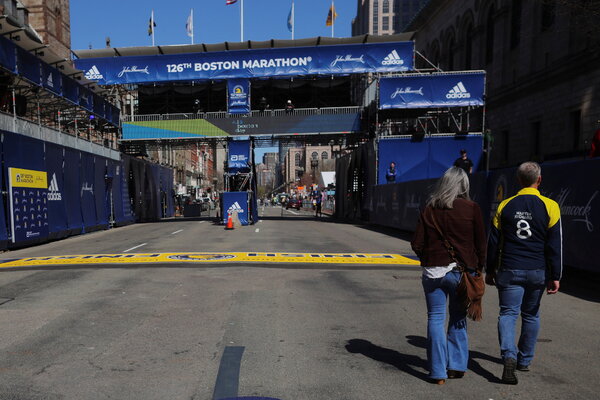Runners from Russia and Belarus will not be allowed to compete in the Boston Marathon on Monday, another example of the countries’ deepening isolation over the invasion of Ukraine.
“Like so many around the world, we are horrified and outraged by what we have seen and learned from the reporting in Ukraine,” Tom Grilk, chief of the Boston Athletic Association, which runs the marathon, said in a statement. “We believe that running is a global sport, and as such, we must do what we can to show our support to the people of Ukraine.”
Citizens of Russia and Belarus who are residents of other countries will still be allowed to take part.
Russia’s invasion of Ukraine, with the cooperation of Belarus, has led to both Russia and Belarus being barred from a growing list of international cultural and sporting events, in addition to the economic and diplomatic penalties they have faced.
Russia has not been allowed to send an official, national team to recent Olympic Games, following revelations of systematic doping, but the penalty was primarily semantic; the Russian team competed under different names. The 2022 Winter Games in Beijing concluded shortly before the Russian invasion on Feb. 24.
The International Olympic Committee then recommended that athletes from Russia and Belarus be barred from future events. FIFA, soccer’s international governing body, effectively blocked Russia from qualifying for this year’s men’s World Cup. Other sports bodies have taken similar action.
The Boston Athletic Association’s ban applied to shorter 2022 races it organizes, but by far the most famous is the marathon, one of the most prestigious in the world. It is scheduled for April 18, returning to its traditional timing on Patriots’ Day, a holiday observed by several states to commemorate the start of the American Revolution.
Because of the Covid pandemic, the 2020 race was canceled and the 2021 event was postponed until this past October.
The association did not say how many Russian or Belarusian entrants there were in this year’s race, but those countries are not distance running powerhouses. In the last Boston Marathon before the pandemic, in 2019, out of more than 30,000 entrants, only 56 were from Russia and three from Belarus.
Check out our Latest News and Follow us at Facebook
Original Source
